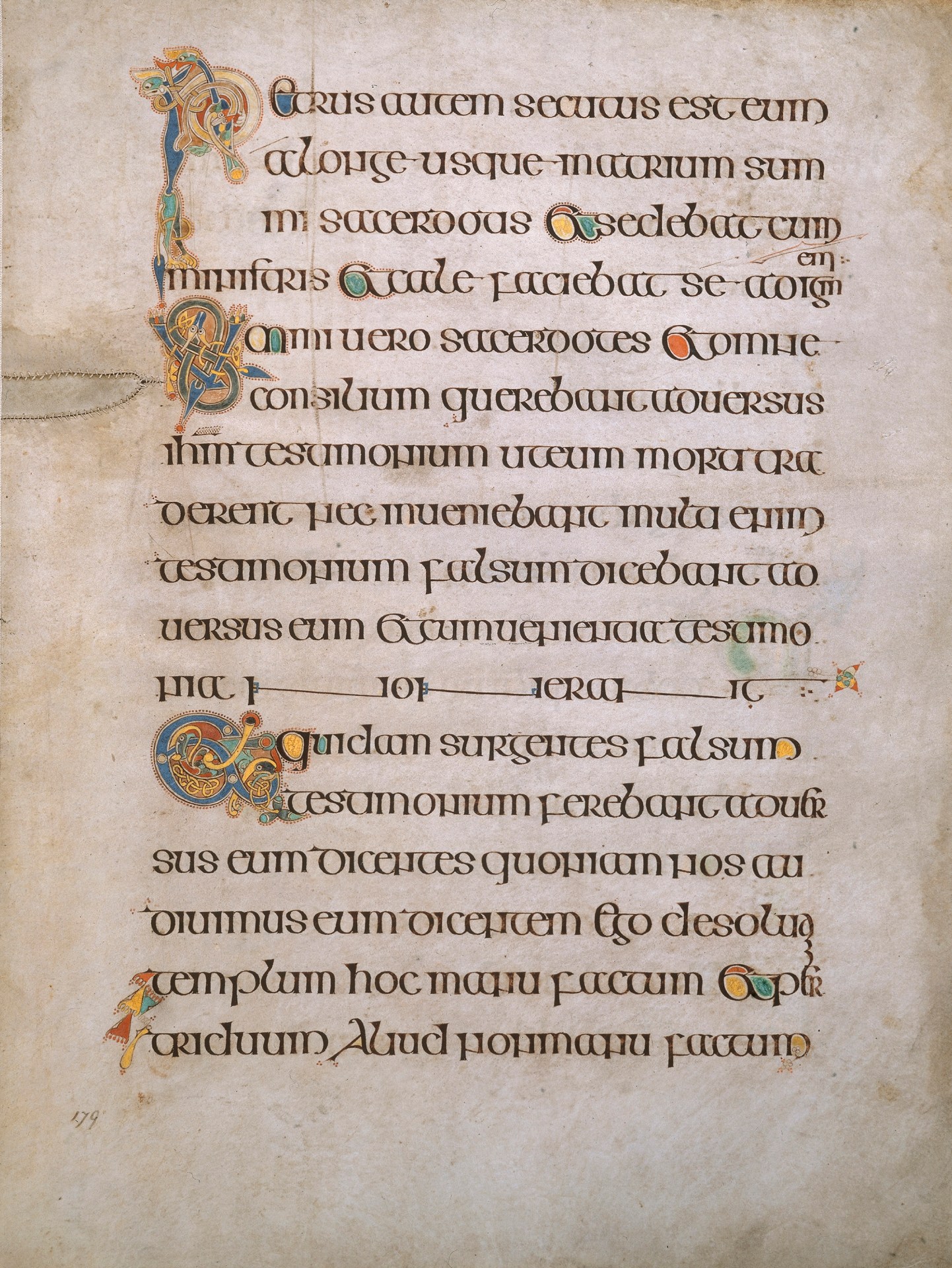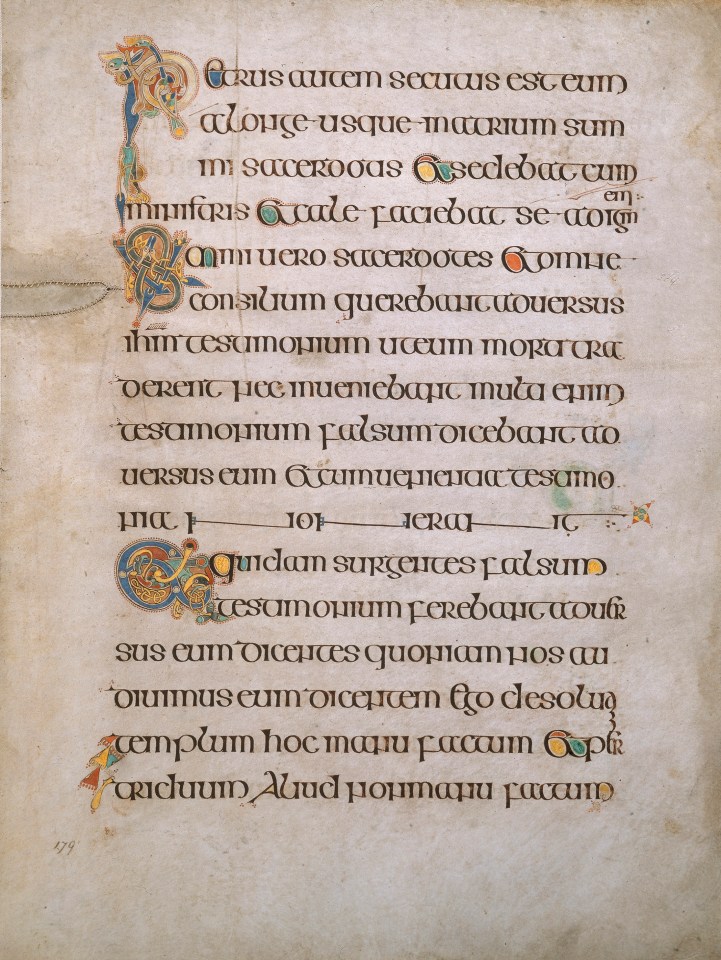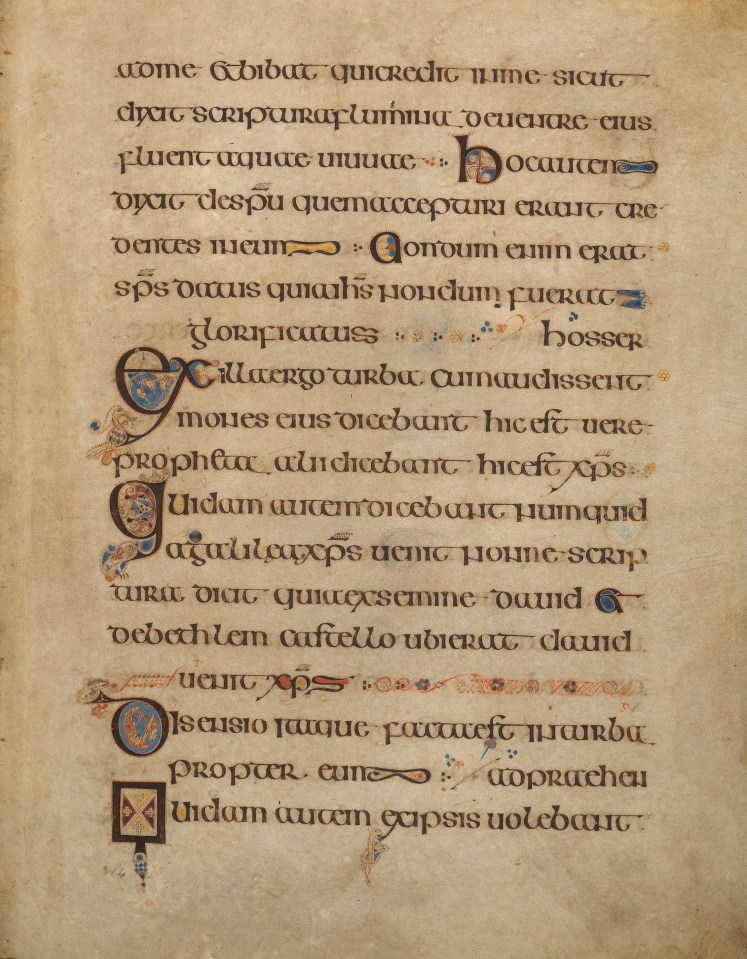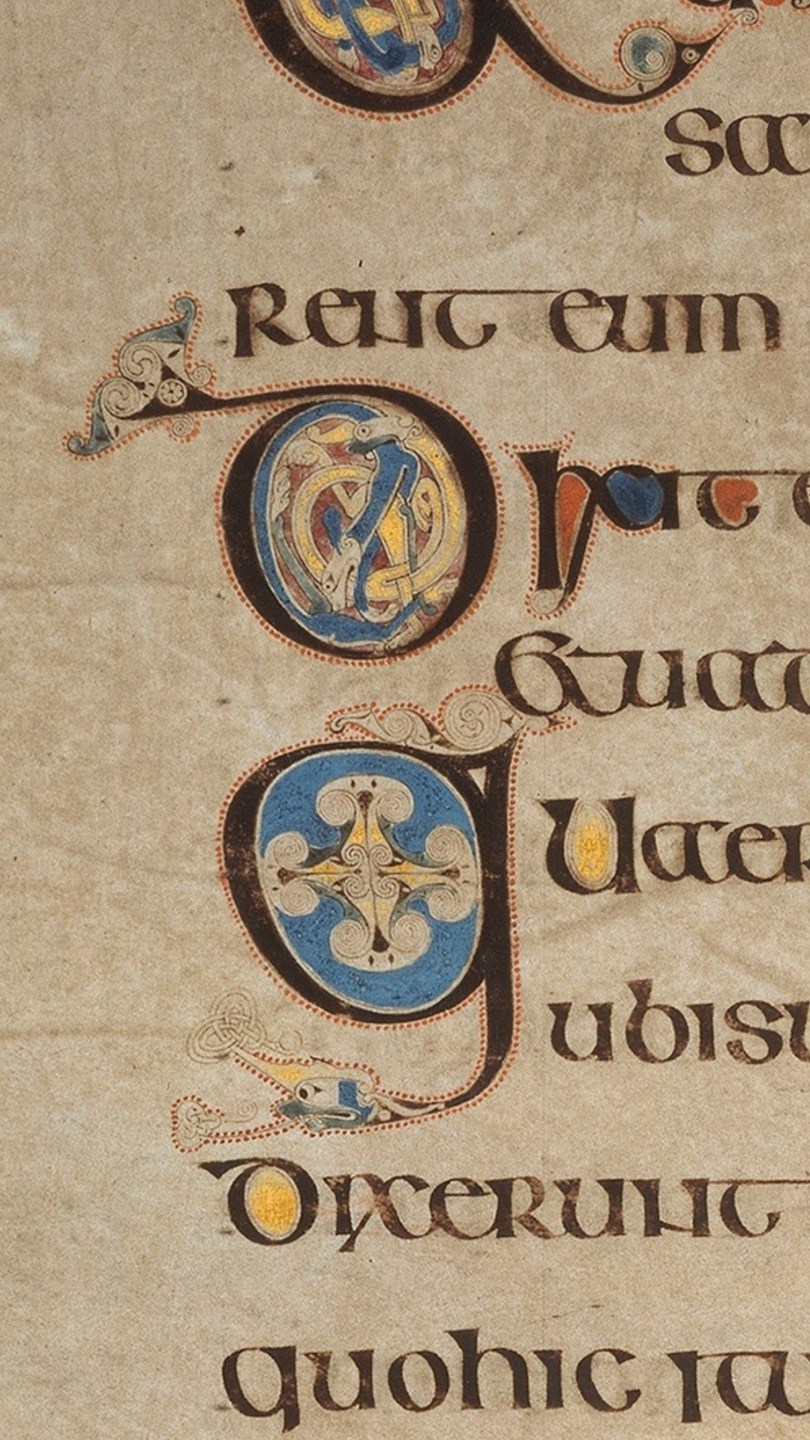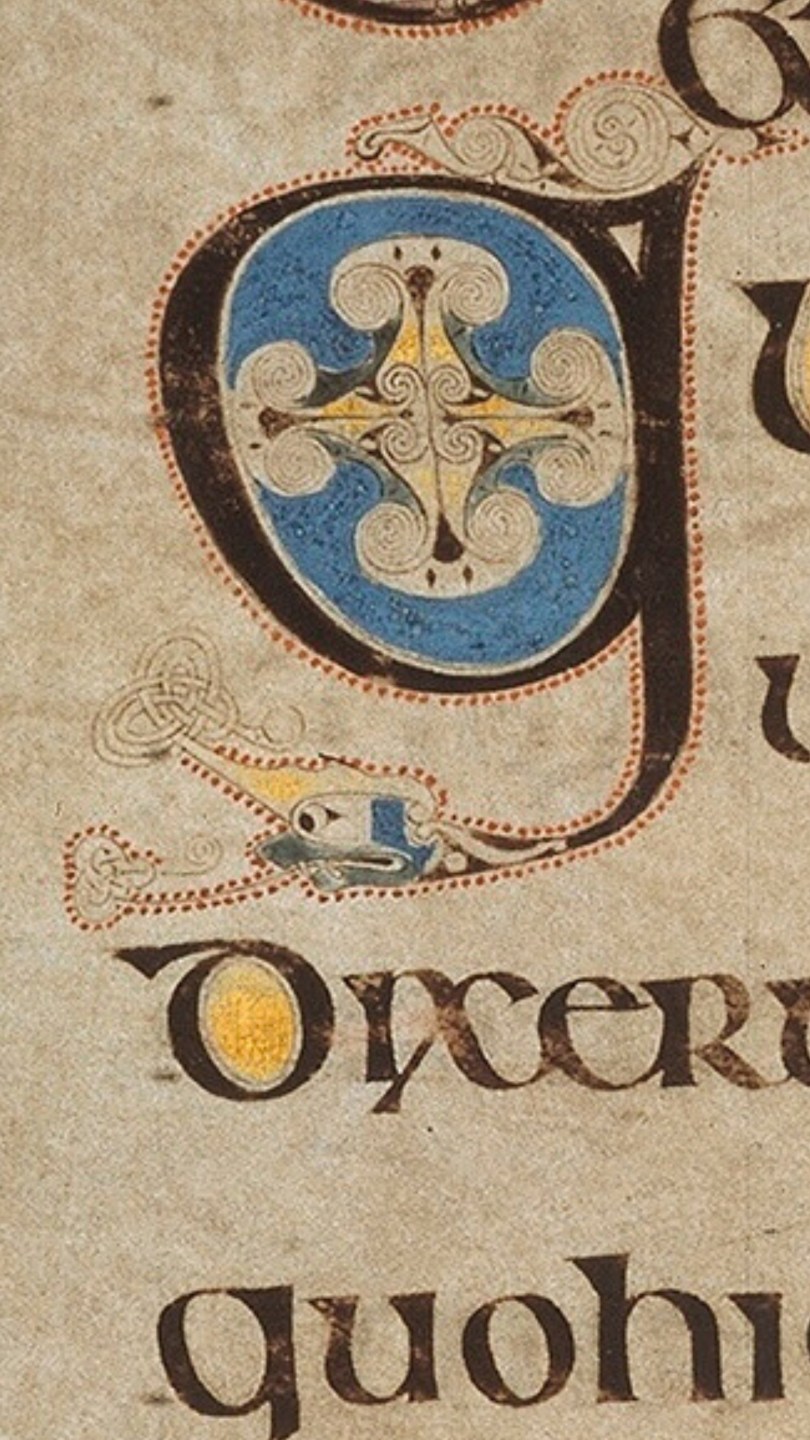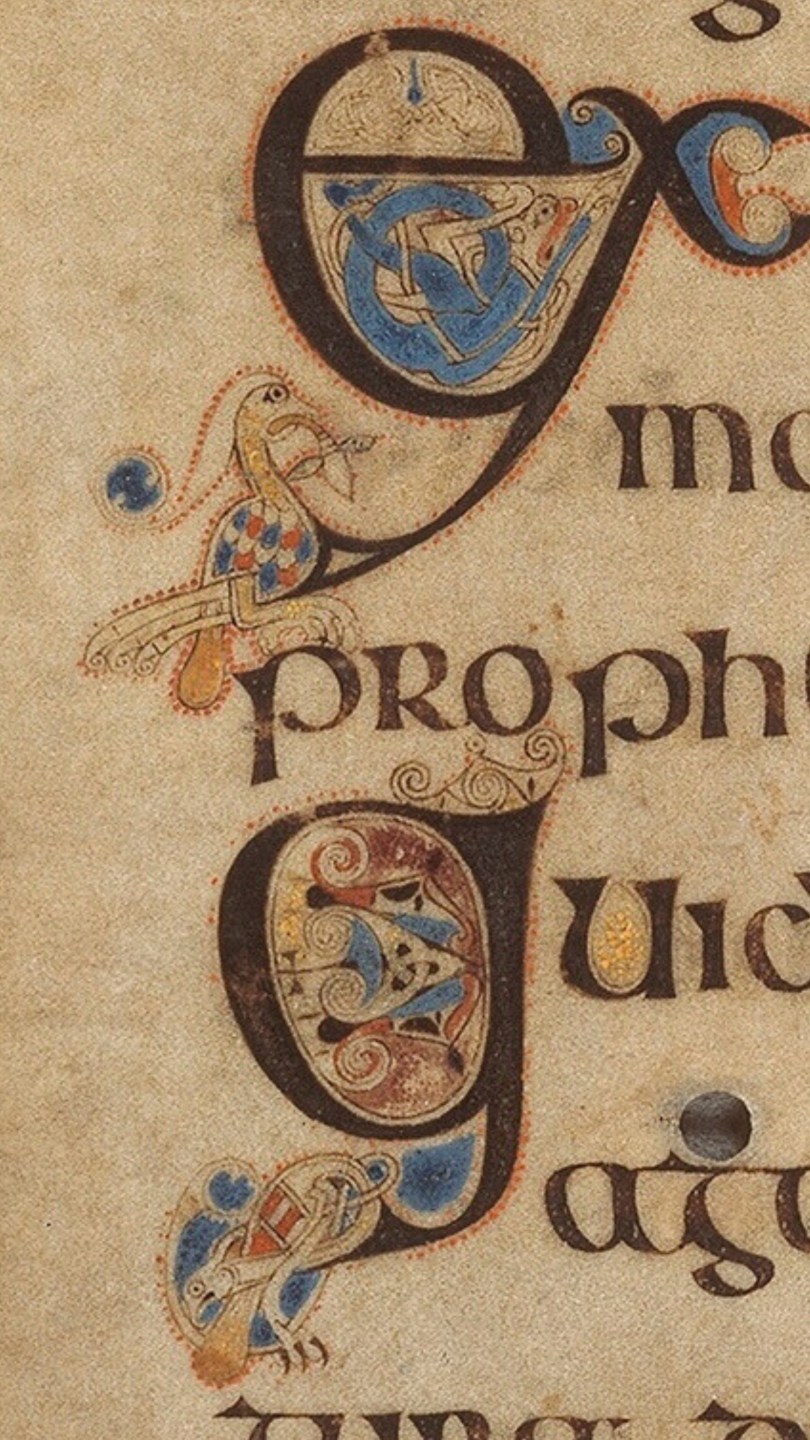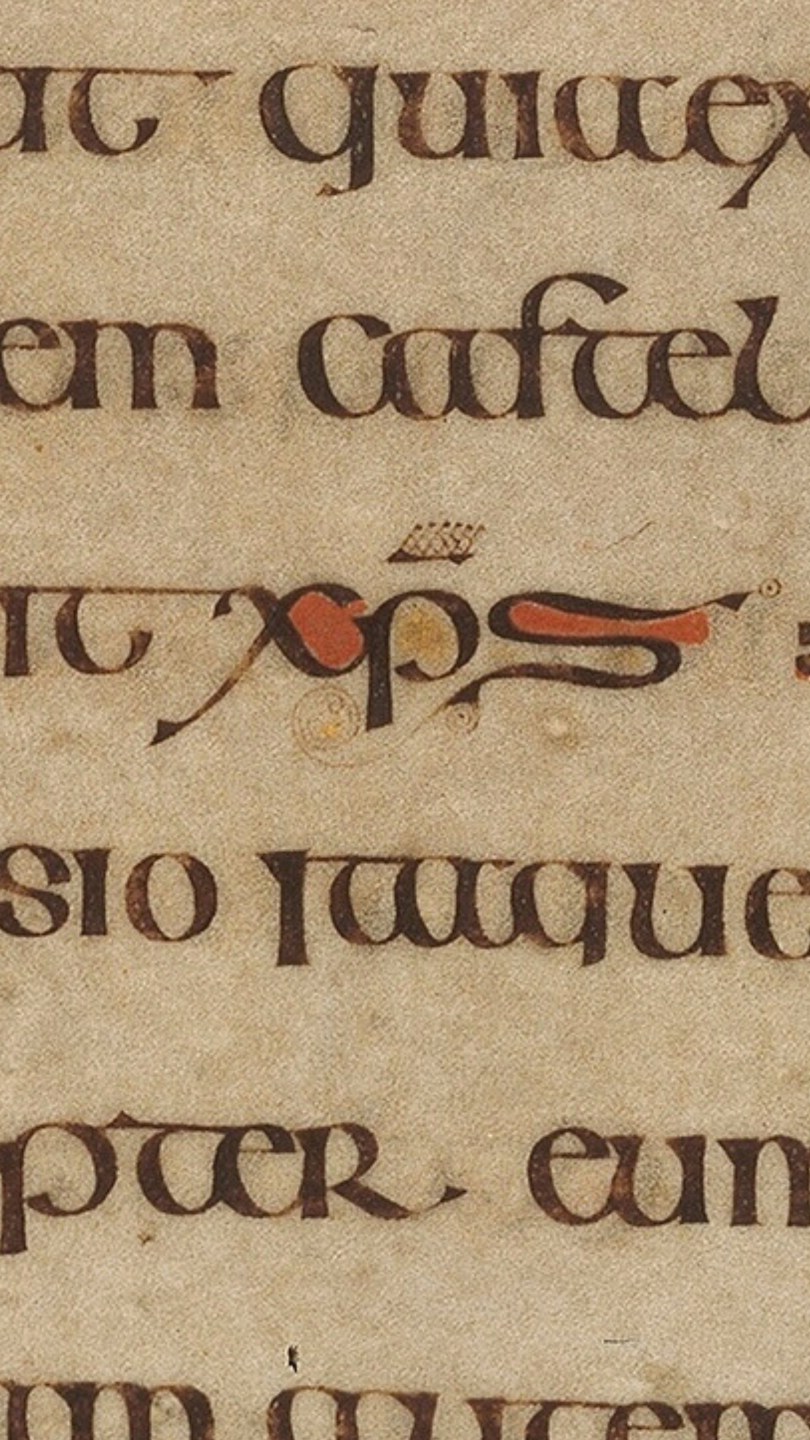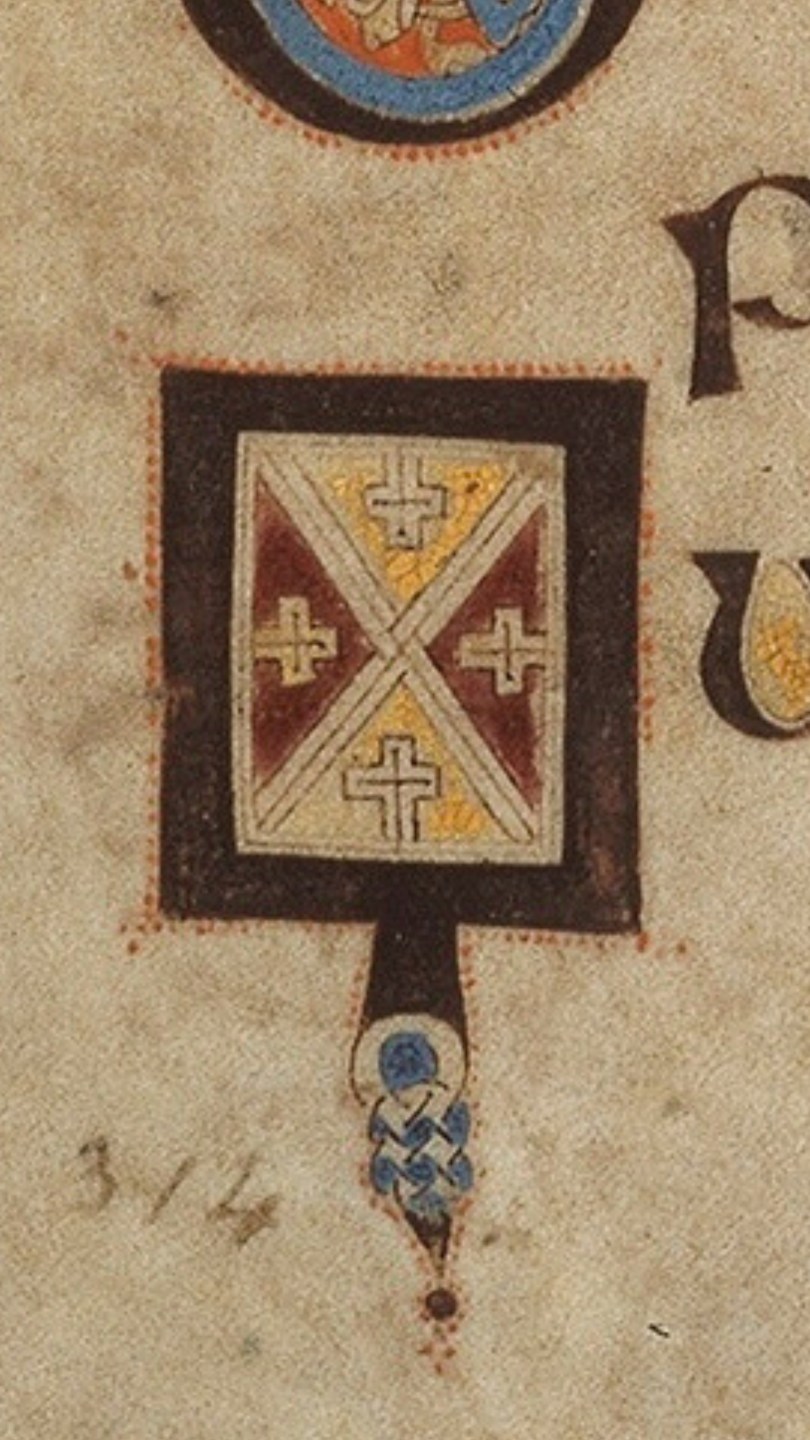
The bowl of the initial Q of Quaeritis (‘You shall seek’) on folio 313v, line 8, is filled with an elaborate cross, a symbol of crucifixion, and the tail of the Q is formed by a lion’s head, with its protruding tongue tied in a knot, outlined in red dots for emphasis. This decorated initial Q has a two-fold message. The elaborate cross in the bowl of the Q alludes to the crucifixion of Christ and his resurrection.
In general, the lion’s head with the tongue is a motif stressing the word of God or Christ. Here the entangled tongue may allude to the cryptic message in the text: ‘You will look for me, but you will not find me, because you cannot go where I will be’.
The gaps between the text such as those on lines 2, 5 and 7 are filled with colourful flourishes such as bunches of yellow grapes.
